
Invasive Species
Invasive species are plants, wildlife, insects, and pathogens that come from another geographic location and infest, disrupt, and degrade the ecology of native habitats and cause negative economic impacts.
Aquatic Invasive Species
Aquatic invasive species weaken fisheries, reduce biodiversity, heighten levels of toxins throughout the water and food chain, and outcompete native species in waterbodies. They also cause harm to human health and negatively impact the economies of Adirondack communities that rely on tourism and outdoor recreation. Personal property values and tax revenues for local governments can decrease when aquatic invasive species invade recreational waterbodies. The cumulative impacts of several invasive species in an area can severely degrade natural resources and diminish human enjoyment.
Invasive species are easily spread through connected waterways, and most are unintentionally transported by trailered recreational boats and on fishing gear and equipment. Once introduced, aquatic invasive species take root in new environments very quickly. They typically do not have natural predators, and it’s difficult for human management to eradicate an infestation. Clean-ups are beneficial, but there are rarely 100% effective eradication efforts once an invasive species is established in a waterbody.
Types of Aquatic Invasives the Adirondacks
Some of the most common aquatic invasive species in Adirondacks are Eurasian watermilfoil, water chestnut, spiny water flea, Asian clams, fishhook water flea, and zebra mussels.
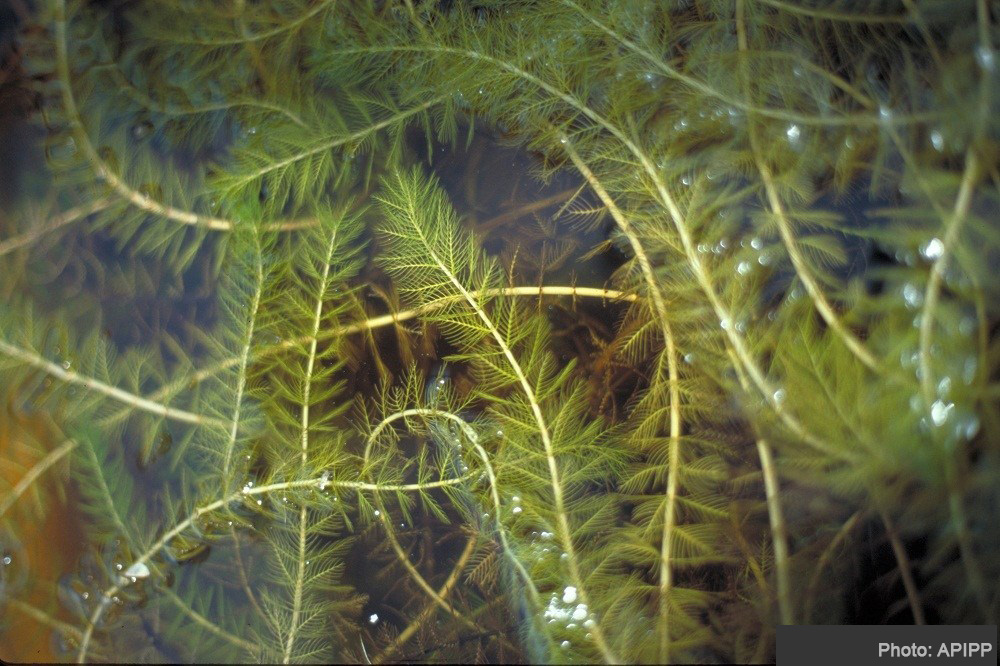 Eurasian Milfoil
Eurasian Milfoil
Eurasian milfoil and water chestnut form thick floating mats that restrict native vegetation from growing and outcompete them for light and space. The presence of these aquatic invasive species creates poor fish habitat and impedes boat traffic, degrading fishing opportunities.
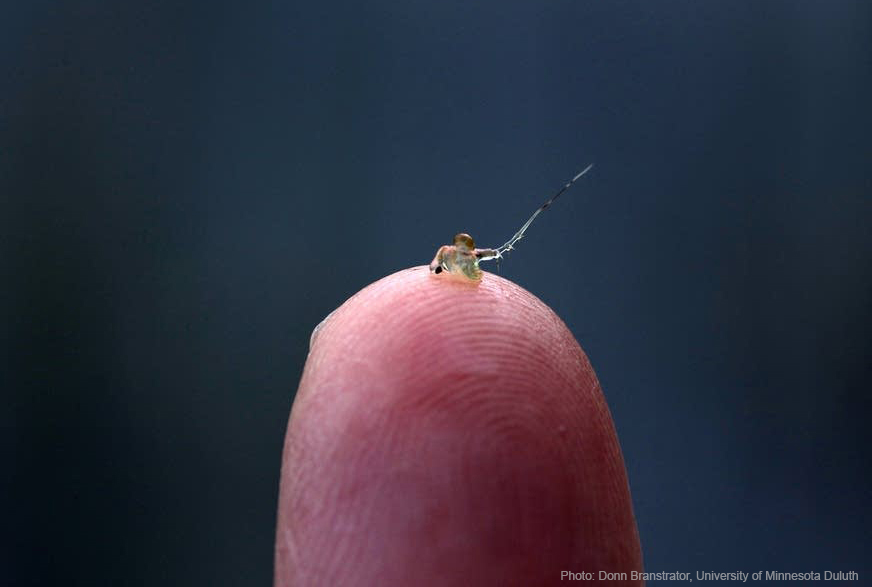 Spiny Water Flea
Spiny Water Flea
The spiny water flea and fishhook water flea outcompete native zooplankton, alter the structure, function, and composition of waterbodies, and can easily be spread by attaching to fishing equipment.
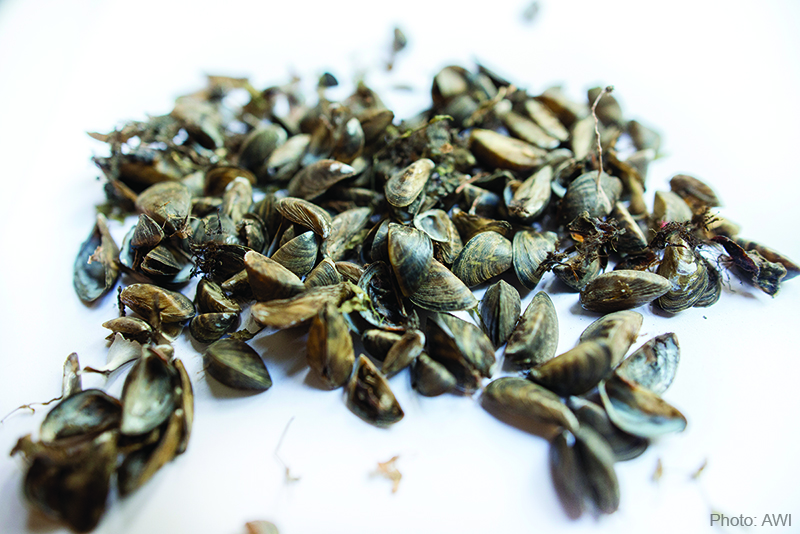 Zebra Mussels
Zebra Mussels
Zebra mussels are another invasive species that has had a costly impact on Adirondack waters through producing harmful toxins, reducing native mussel and crayfish populations, and clogging drinking water intakes.
Types of Terrestrial Invasives the Adirondacks
Some of the most common terrestrial invasive species in Adirondacks are phragmites, the Hemlock Woolly Adelgid, and the Emerald Ash Borer.
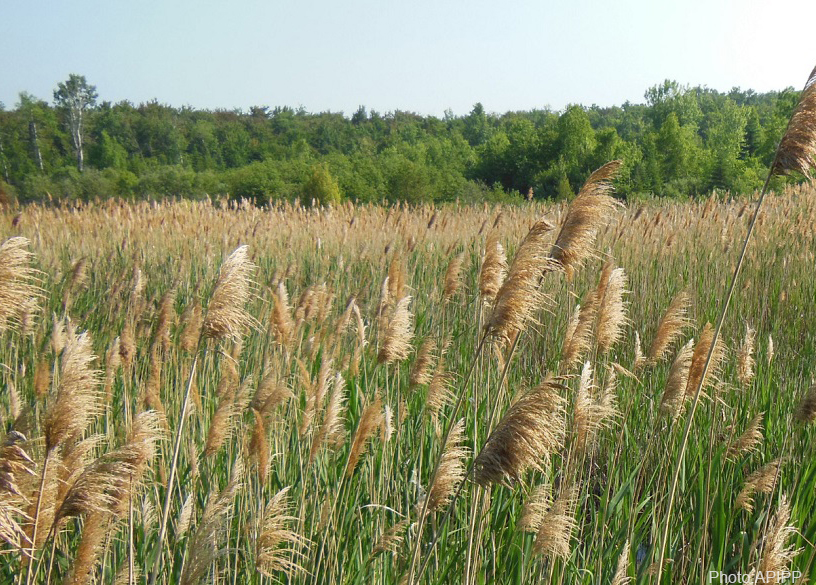 Phragmites
Phragmites
Phragmites, also called common reed grass, is an aggressive wild grass that overtakes wetlands and roadsides, growing as tall as 15 ft. These grasses impact views, damage infrastructure, and reduce property values. The Department of Transportation has become the first line of defense in managing Phragmites as highway management strategies impact their spread.
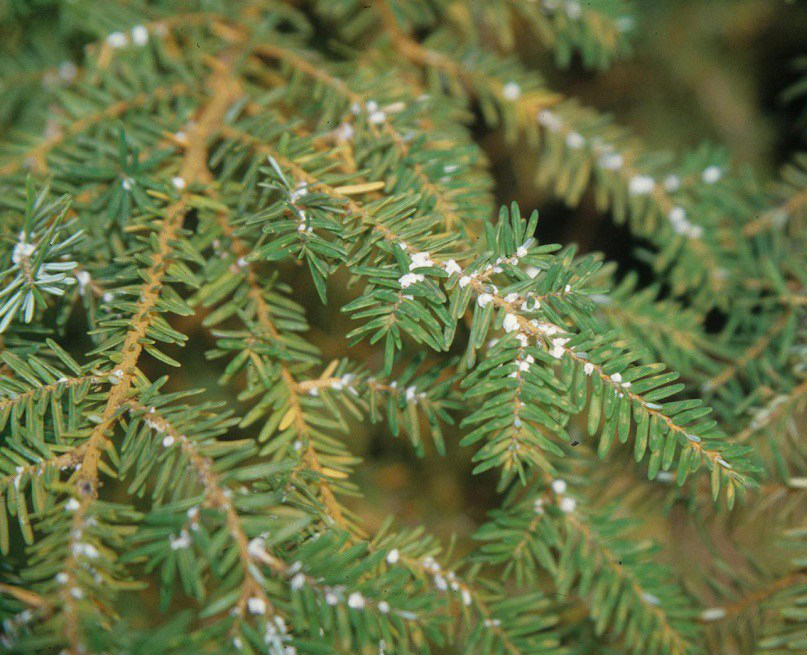 Hemlock Woolly Adelgid
Hemlock Woolly Adelgid
The Hemlock Woolly Adelgid is a tiny insect that feeds on hemlock trees. It can kill a tree in as quickly as four years once infestation has occurred. While they reproduce in all hemlocks, they feed on Eastern and Carolina Hemlocks exclusively. They are named for the white woolly covering on mature females.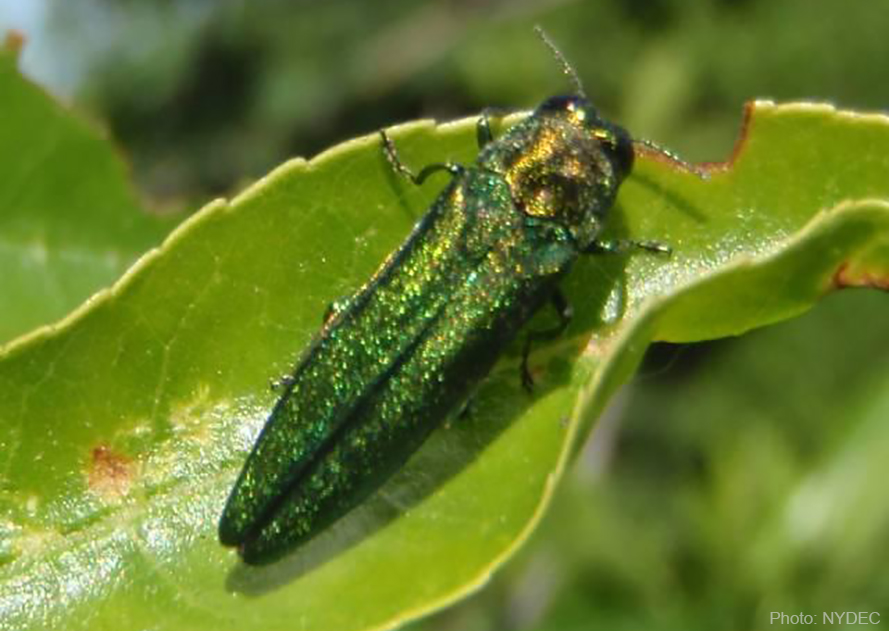 Emerald Ash Borer
Emerald Ash Borer
The Emerald Ash Borer is a greenish-gold beetle with a purplish red abdomen about ¾ inches in length. These insects prey on native ash trees and have killed tens of millions of trees in the United States. Eradication is no longer an option so reducing the transport of infested ash products can slow the spread of these pests.




